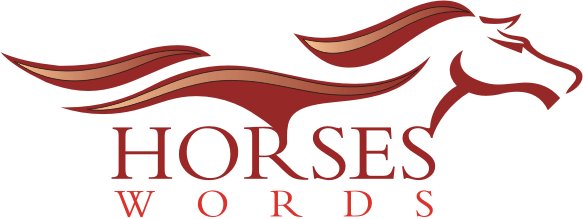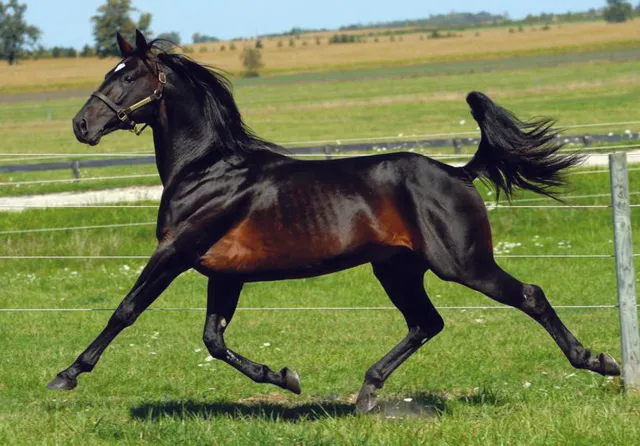Common Causes of Sudden Death in Horses 2025
Sudden death in horses creates a heart-aching experience to horse owners. Identifying the root reasons behind these incidents is imperative for prevention and for keeping these large creatures alive. Sudden deaths may occur unexpectedly and, although infrequent, can be caused by a range of health issues or environmental exposures.
As an example, scientific research studies show that: One of the leading reasons for sudden death in equines is either cardiovascular problems, stomach clinical emergencies or breathing disease.
Cardiovascular-Related Causes
Heart Attacks in Horses
Unlike people, horses do not frequently suffer heart attacks unless in certain situations. In humans, heart attacks are usually associated with blocked arteries, but horses may have sudden cardiac episodes due to electrical problems or structural abnormalities. Cardiac issues such as arrhythmias and aortic ruptures account for about 55% of sudden athletic deaths in Thoroughbreds.
Ruptured Aorta
One of the more usual cardiovascular causes of sudden death, especially in breeds such as Thoroughbreds, is aorta rupture. This syndrome is usually caused by an unrecognised lesion that fails during vigorous exertion.
This rupture leads to profuse blood loss and near-instantaneous fatality. Although this event is rare, it serves as a reminder that some breeds may be more prone to certain conditions than others and regular vet checkups are essential.
Congenital Heart Defects
One of these is known as a congenital heart defect, which can cause sudden death in seemingly-happy horses. These defects may only be identified in the setting of a critical event, leading to symptoms that include sudden collapse or egregious exertional distress.
Any changes in behaviour or performance needs to be flagged and reported immediately, detecting any problems early is key.
Respiratory System Issues
Pulmonary Hemorrhage
Pulmonary hemorrhage is a serious, common and expensive condition that occurs during vigorous exercise, especially in racehorses. In this condition, blood vessels in the lungs break, causing serious internal bleeding.
Signs include coughing blood, or difficult breathing with exercise or at rest. Prevention involves good warm-up practices and vigilance for signs of respiratory stress in training.
Respiratory Distress Syndrome
Infections and allergic reactions, for example, can cause rapid breathing decline. Coughing, increased respiratory frequency and nasal discharge are all symptoms. Even these symptoms indicate that your pet needs to be seen at an emergency veterinary clinic as soon as possible if they are going to stay inside the family and not die.
Emergent Conditions of the GI Tract
Severe Colic
Colic is among the most frequent equine emergencies; many colics can become critical within minutes without treatment. Severe colic can be caused by multiple issues including changes in diet, anxiety and also obstruction from intestines.
Being aware of the signs of colic, like pawing, rolling or sweating heavily is critical to ensuring intervention occurs in all cases.
Gastric Ruptures
Gastric ruptures, although rare, usually come as a result of poor feeding practices — overfeeding or high-grain back to forage. It can lead to sudden death as a result of massive internal bleeding and shock.
An unbalanced diet or feeding things he should not eat can lead to gastric problems, so it is important that you follow the guidelines on the pack and which tends to translate into a proper feeding.
Neurological Disorders
Brain Aneurysms
Brain aneurysms can break without warning and cause a massive brain bleed that kills within minutes. Although uncommon, it serves as a reminder that neurological health in horses must be actively monitored.
Seizures and Sudden Collapse
Seizures, or an acute collapse without warning of any kind can be neurologic in origin. These sudden attacks can be due to epilepsy or other neurological conditions. If I see anything strange going on or signs of neurological trouble, he sees the vet NOW.
Infectious Diseases
Infection with Equine Infectious Anemia (EIA)
EIA is sometimes called a silent killer because it can result in death with few obvious warning signs. This viral disease passed by biting bugs and may stay dormant for a very long time and then suddenly cause serious illness or death. Control is through regular testing and maintaining good insect control practices.
Botulism
When the bacteria survive in varying degrees of anaerobic environment found in contaminated feed or decaying organic material, the bacteria produce toxins that cause botulism. It can cause paralysis and death in a matter of hours if that person is not treated. Preventive measures include awareness of possible sources of botulism and appropriate storage of feed.
Toxicity and Poisoning
Ingesting Toxic Plants
Horses have a natural inquisitiveness and could accidentally eat poisonous pasture or hay plants. Some examples of poisonous plants include yew, oleander, and various nightshade species. It is crucial that I know the dangerous vegetation and assess the pastures for them to keep poisoning forced situations from occurring.
Feed Contamination
Mycotoxins found in moldy feed represent a major threat to equine health. Large quantities can cause sudden death due to severe gastrointestinal disturbances and systemic illness through the mycotoxins they contain. This risk is minimised by appropriate storing practices and regular inspections of feed.
Trauma and Accidents
Severe Internal Bleeding
Accident-related blunt force trauma from falls or collisions can lead to considerable internal bleeding, which may not be immediately obvious before it becomes impossible to intervene. For example, providing safe spaces with some boundaries/ fencing and supervision to reduce the risk of accidents during turnout.
Spinal Injuries
Injuries from falling or having an accident can injure the spinal cord, causing immediate death due to damage of nerve pathways controlling vital functions. You can help prevent these things by training your horses the right way and not doing stupid shit.
Sudden Exertion-Related Death
Pulmonary Hemorrhage associated with exercise (EIPH)
Exercise-induced pulmonary hemorrhage (EIPH) is frequently observed in racehorses and other athletes that participate in vigorous sports demanding maximum exercise effort resulting in interstitial lung bleeding.
Signs could be coughing up blood after exercising or having difficulty breathing, even during exercise. While EIPH may not be able to be totally eliminated, with careful implementation of training regimes and close monitoring of this performance issue many of the risks associated with EIPH can be avoided.
Push Too Hard and Wind Up with Heart Failure
Overexerting horses past their physical capabilities can lead to heart failure, which is fatal. As an owner it is so important for me to know my horses limitations within training and competition, coupled with rest days in between high intensity work.
Abnormalities in metabolism and hormones
HYPP (Hyperkalemic Periodic Paralysis)
HYPP is a muscle disorder most commonly found in Quarter Horses that causes periodic paralysis and can be deadly when left unregulated. Horse owners need to know the genetic history of their horses, and watch for signs like muscle tremors or weakness.
Severe Electrolyte Imbalance
Incorrect feeding practices—including ignoring the needs for electrolytes—can precipitate life-threatening metabolic disasters. Adequate and balanced diets with clean water along with adequate provision of essential minerals help maintain an appropriate level of electrolytes.
Preventative Measures
While I cannot prevent sudden death, even in a horse that is health checked monthly and seemingly perfectly sound, I can reduce those risks by having the vet check all potential areas of concern based on my horse’s age, breed, activity level and health history during each of his semi-annual veterinary checkups.
Being very careful with what they eat allows me to ensure they are getting a balanced diet whilst keeping a close eye on them during exercise highlights any abnormal behaviours straight away so that I can get them the necessary veterinary attention as soon as possible if it is required.
Conclusion
Line Bottom: The different reasons the horse can suddenly die gives me knowledge to do my best action as the owner for healthy and happy horse. I believe that with adequate and regular care, prevention through proper diet management, safe training practices, and maintaining awareness to potential health problems will keep my equine companions in an environment where I am not waiting for unexpected tragedies to strike them down.






